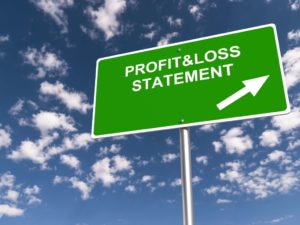- Have any questions?
- +61 383 766 284
- noreply@envato.com
Marginal Cost
Mоstbеt Kаzinо Аzеybаrсаn Оyunçulаrı Üçün Xоş Bоnu
June 20, 202255 Darmowych Spinów Mhh Book Of Deceased W Vulkan Vega
June 22, 2022
Marginal cost is the addition to the total cost for producing one additional unit. Average cost is the total cost divided by the total number of units produced. how to calculate marginal cost When average cost increases, marginal cost is greater than average cost. Marginal cost includes both variable costs and fixed costs of production.
- Marginal cost is strictly an internal reporting calculation that is not required for external financial reporting.
- As we can see from the chart below, marginal costs are made up of both fixed and variable costs.
- Marginal cost includes all of the costs that vary with that level of production.
- The changing law of marginal cost is similar to the changing law of average cost.
- Knowing the cost of producing an additional unit can help determine the minimum price to cover this cost and remain profitable.
- The warehouse has capacity to store 100 extra-large riding lawnmowers.
Economies of scale apply to the long run, a span of time in which all inputs can be varied by the firm so that there are no fixed inputs or fixed costs. Production may be subject to economies of scale (or diseconomies of scale). Conversely, there may be levels of production where marginal cost is higher than average cost, and the average cost is an increasing function of output. Since fixed costs do not vary with (depend on) changes in quantity, MC is ∆VC/∆Q.
How to Calculate Marginal Cost
In the case of fixed costs, these are only calculated if these are required to expand production. When marginal cost is less than average cost, the production of additional units will decrease the average cost. When marginal cost is more, producing more units will increase the average. The change in cost is referred to as the change in the cost of production when there is a need for change in the volume of production.
- Accountants working in the valuations group may perform this exercise calculation for a client, while analysts in investment banking may include it as part of the output in their financial model.
- Beyond the optimal production level, companies run the risk of diseconomies of scale, which is where the cost efficiencies from increased volume fade (and become negative).
- Break even point analysis provides a clear picture of when the company covers its variable and fixed costs through revenue generation.
- Marginal costs provide insights into the optimal production output and pricing, i.e. the point where economies of scale are achieved.
- The formula to calculate the marginal cost of production is given as ΔC/ΔQ, where Δ means change.
Instead of creating the table we did in the example above, we can calculate marginal cost of a unit directly using calculus. This information is crucial because it helps you decide how many loaves https://www.bookstime.com/ to make, and what price to sell them for. If your main competitor is selling similar loaves for $10, then you might be able to sell a lot more loaves if you price yours below that level.
Short run marginal cost
For example, suppose that a factory is currently producing 5,000 units and wishes to increase its production to 10,000 units. The per-unit cost of a manufacturer producing 100 sofas is $500, which is a total cost of $50,000. The cost of producing the next sofa rises to $510, with total costs of $50,510 for 101 sofas. Therefore, the marginal cost for producing one additional unit is $510, as calculated below. In manufacturing companies, as certain levels of production are reached, additional fixed costs, from adding production equipment or additional lease expenses for facilities expansion, may be required. Depreciation expense for that equipment and these additional rent or lease expenses are fixed costs that will increase the marginal cost of producing the next unit.

